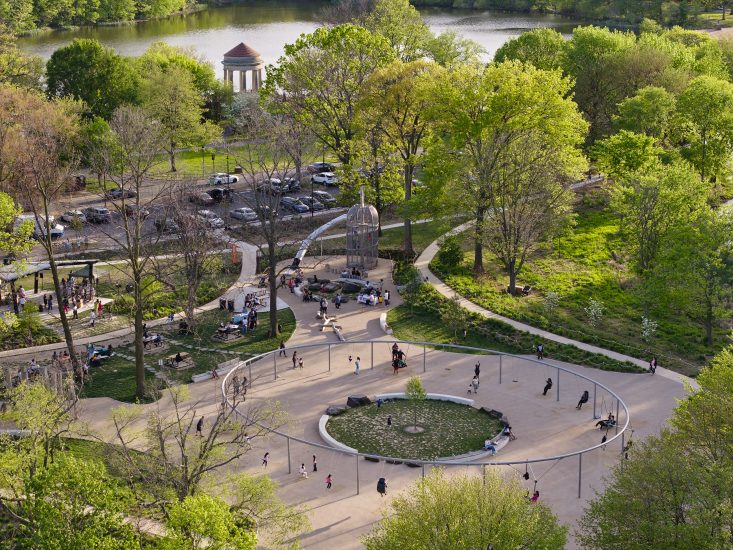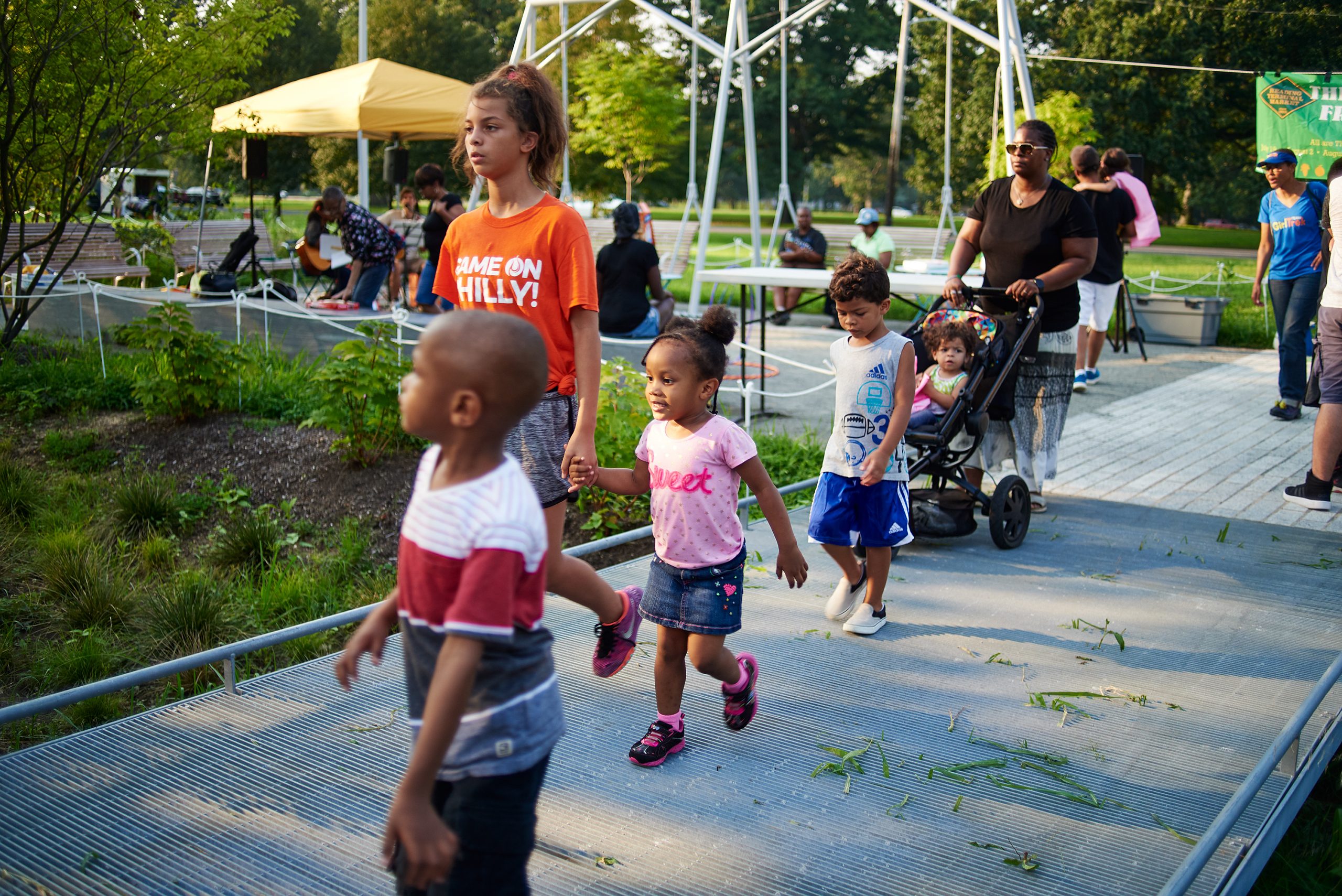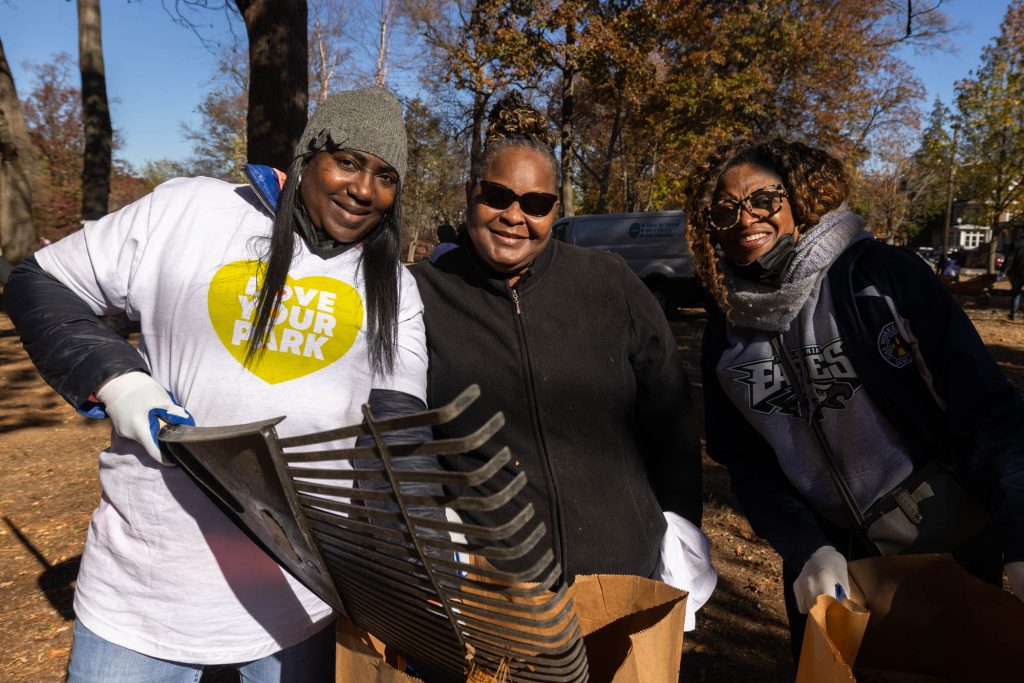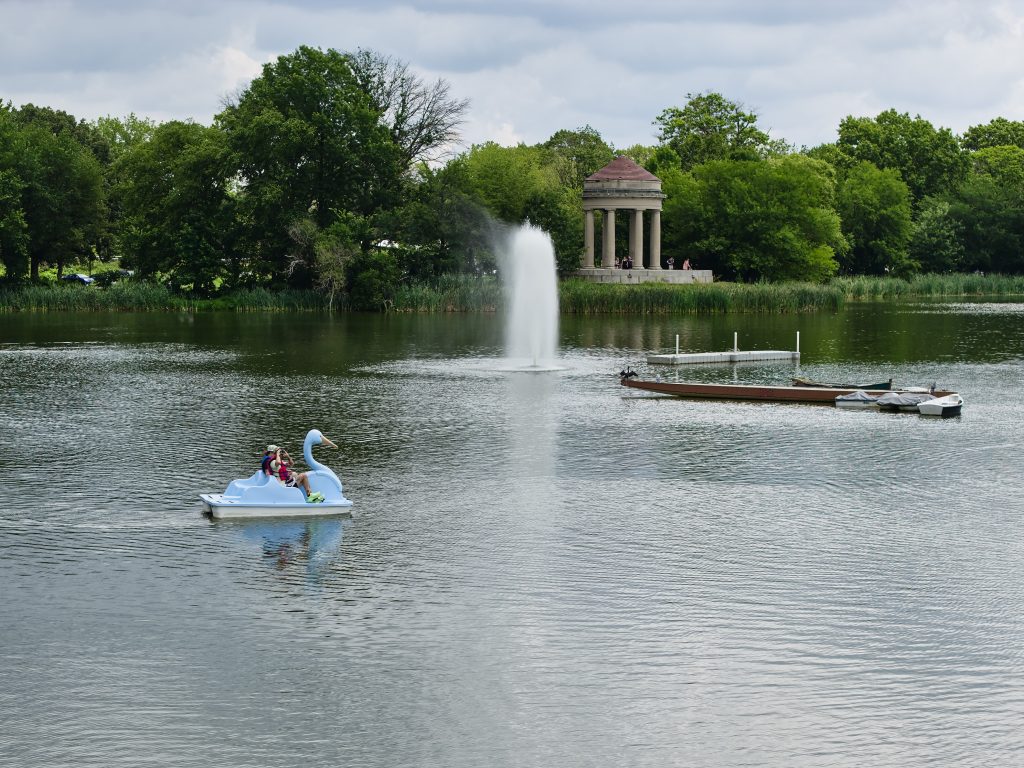We’re proud to share that Philadelphia is featured in Investing with Intention: Environmental Sustainability, a national report from Reimagining the Civic Commons that explores the connections between public space investment and environmental sustainability. Released this month, the report highlights how cities like Philadelphia are turning parks, trails, and community spaces into tools for climate resilience.
Cities are already facing climate change impacts including rising heat, flooding, and poor air quality, which hit communities with less green space the hardest. But environmental decline isn’t inevitable. Parks, trails, and civic spaces can reduce harm, restore nature, and build community when designed thoughtfully. The climate crisis is also a social issue, as disinvestment has left many low-income areas with less tree cover and fewer safe green spaces. Sustainable solutions require intentional, community-led investment in public spaces.
This report highlights several innovative projects across the world, some of which are right here in Philadelphia. Fairmount Park Conservancy’s featured projects include:
- FDR Park Plan: The Conservancy, Philadelphia Parks and Recreation, and design firm WRT are leading a bold plan to transform South Philly’s FDR Park into a model of climate resilience and inclusive public space. By restoring 209 acres into wetlands and meadows, expanding wildlife habitats, and raising flood-prone areas, the plan manages stormwater while improving access to nature. Anchored by community input from over 3,000 residents and stakeholders and sustainable design, FDR Park’s revitalization reflects a shared vision for the future.
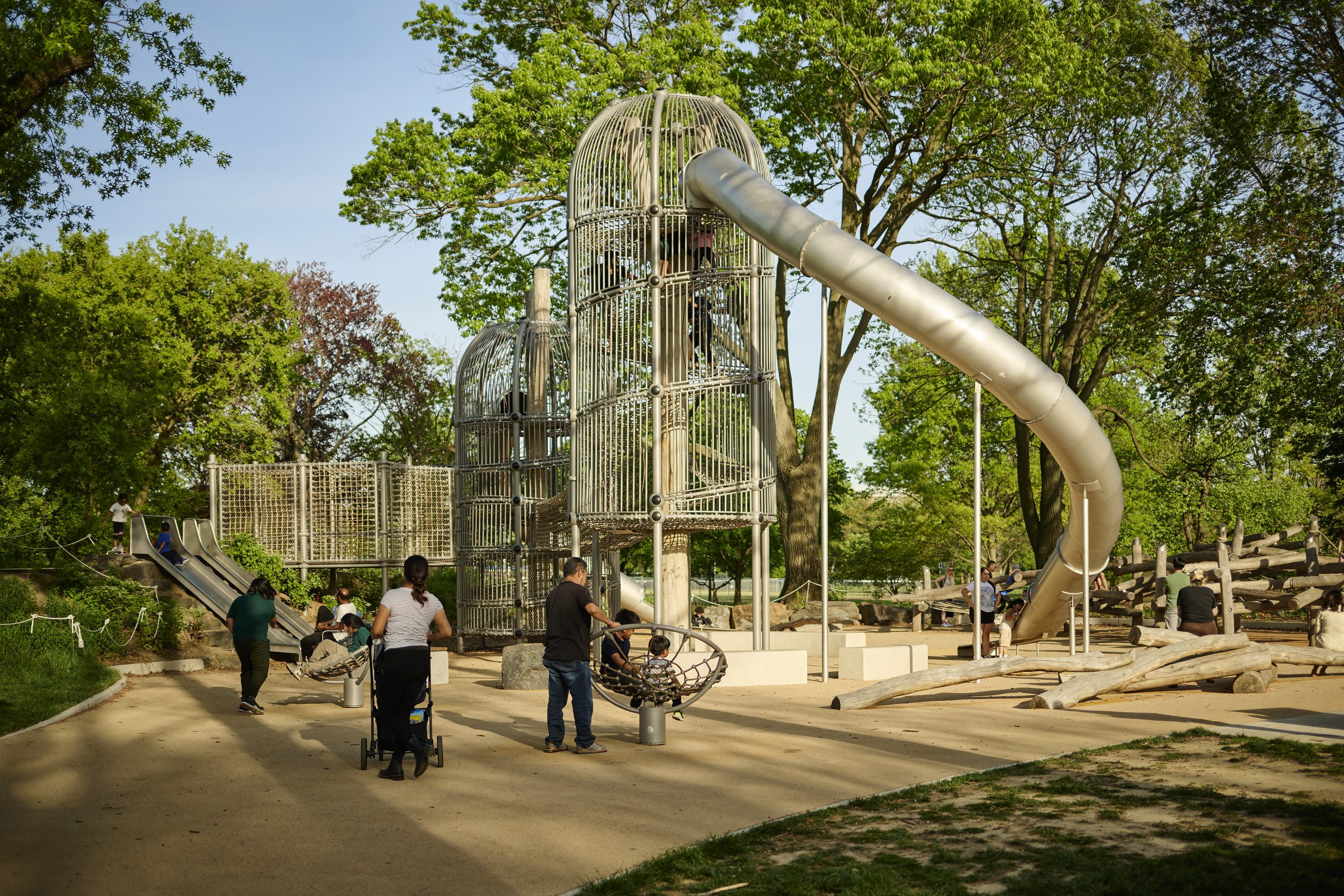
- Parkside Edge: Our team at the Conservancy, in collaboration with city agencies and with support from the Centennial Parkside CDC, transformed this formerly-overlooked stretch of Fairmount Park into a welcoming “civic front porch.” Featuring rain gardens, native plantings, and inviting gathering spots, the project merges ecological restoration with community connection.
- Mows to Meadows: The Conservancy is transforming underused lawns in West Fairmount Park into native meadows that support biodiversity, manage stormwater, and invite deeper engagement with nature.
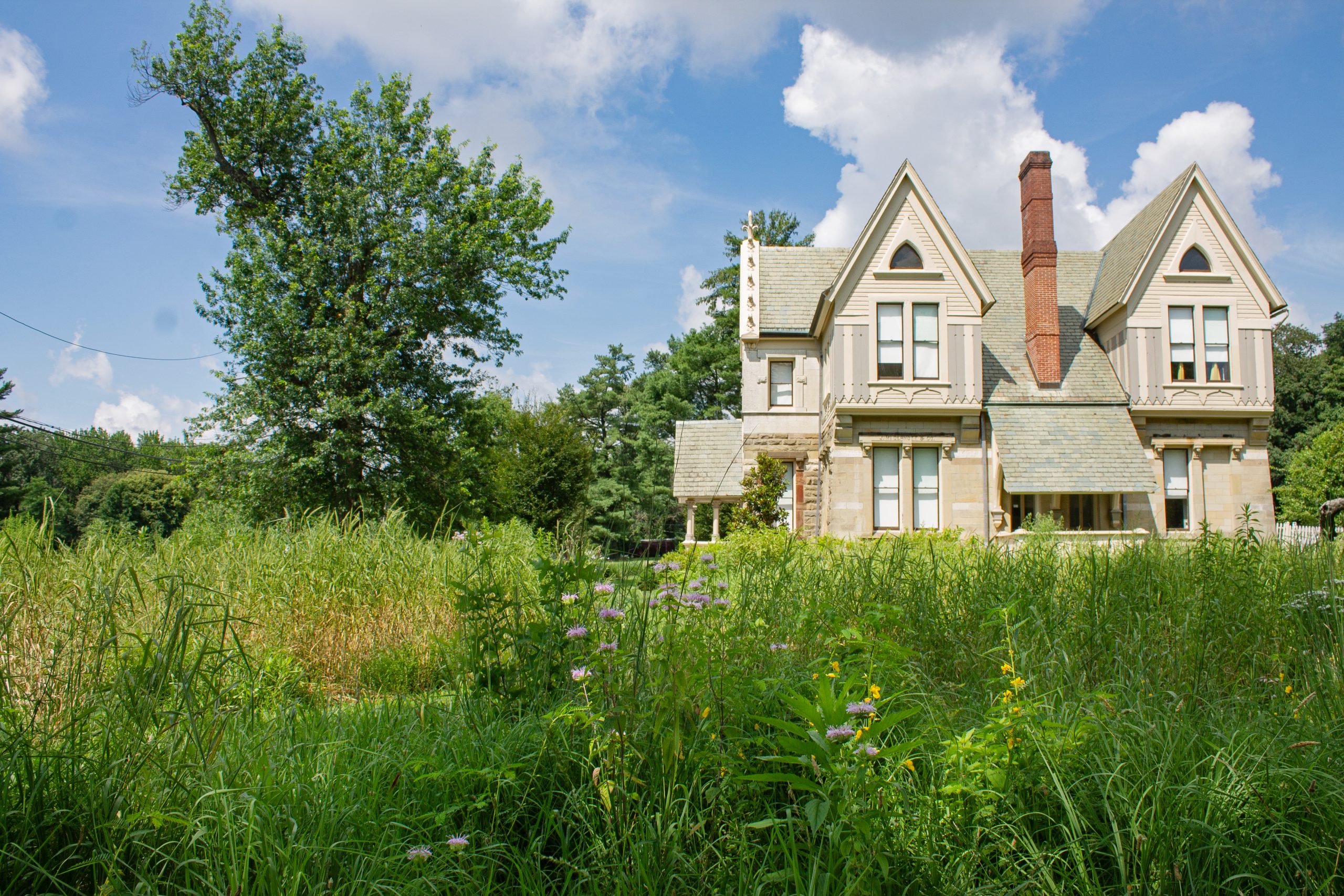
The report also includes a practical toolkit for cities and civic leaders looking to design and invest in public spaces as environmental infrastructure. A few key takeaways include:
- Social Connection as Resilience: Public spaces support health while building social infrastructure that helps communities prepare for, respond to, and recover from environmental shocks.
- Tree Canopy Expansion & Stewardship: Mature urban trees provide crucial shade, clean air, and reduce stormwater runoff. Cities must invest not just in planting trees, but in maintaining them, especially in historically disinvested neighborhoods. Check out the Philly Tree Plan for more on this topic!
- Native Plant Materials: The use of native and adapted plants in public spaces supports biodiversity, requires less maintenance long-term, and brings beauty and purpose to underused green space.
- Green Stormwater Infrastructure: Bioswales, rain gardens, and permeable surfaces help cities manage heavier rains and aging infrastructure. When integrated into public spaces, they also become visible symbols of resilience and offer community education and beautification opportunities.
- Sustainable Materials & Design: Choosing low-impact, recycled, or nature-based materials in public construction projects reduces environmental impact.
- Cooling Design & Shade: Green roofs and intentional shading strategies at transit stops, libraries, and playgrounds help mitigate the urban heat island effect, offering critical respite in neighborhoods most affected by rising temperatures.
- Sustainable Transportation Policy and Trail-Oriented Development: Connecting civic assets with walking, biking, and transit-friendly routes both reduces emissions and strengthens the connection and health of neighborhoods. The new Gateway Plaza in FDR Park, located near a subway station and brand new bike path, offers a great example of this work in action.
At Fairmount Park Conservancy, we’re honored to be part of the work of reimagining what parks and civic spaces can become in the 21st century. Our featured projects show what is possible when public space investment is guided by environmental sustainability, social equity, and long-term civic vision.
Read the full report here.
